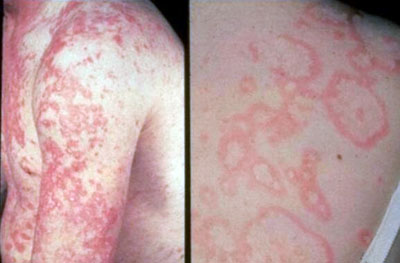
TCM Perspective On
ErythromelalgiaBurning feet syndrome or erythromelalgia as it is medically known brings about a sudden burning and reddening sensation in the feet of individual sufferers. The burning sensation can be a very intense and painful experience for the individual in some cases of the condition. Though in other individuals, the burning sensation may only be a mild irritation that does not seriously impair their quality of life. The patient may feel relief from the symptoms of the condition by walking on a cold floor, though this action will bring only temporary relief at the most. The feet often appear swollen and feel quite hot to the touch during the severest manifestations of the condition in the patient. Raising the legs, taking long periods of rest and relaxation, and the application of cooling lotions, can bring some relief to the patient. The typical symptom of a burning sensation in the feet occurs at night in the majority of patients.
Western Point of View
Erythromelalgia is a rare and frequently devastating disorder that typically affects the skin of the feet or hands, or both, and causes visible redness, intense heat and burning pain. The term erythromelalgia describes the syndrome: erythros (redness), melos (extremity) and algia (pain). An alternate name is "erythermalgia" that emphasizes the thermos (heat) – an essential part of the syndrome.
While usually affecting the lower extremities (legs and feet) and upper extremities (arms and hands) other body parts like faces or just ears or the nose may be involved. It usually affects both sides of the body, but can affect just one. The associated pain and burning sensations can be extremely severe. People with EM often make major adjustments to their lifestyles to avoid flare-ups. Even in mild-to-moderate cases, normal functioning such as walking, standing, working, socializing, exercising, and sleeping may be impaired.
Precipitating factors include warm temperatures and even mild exercise. Cooling the hot body parts relieves the pain, as does elevating the affected areas. The use of ice and water soaking is strongly discouraged as ice and water submersion can damage the skin. The characteristic of cooling bringing relief to EM sufferers pain is a hallmark trait of EM. Approximately five percent of those with EM have an inherited condition that research has shown to be caused by genetic mutations. These people usually have other members of their families with the syndrome.
A number of different medications have been shown effective in relieving symptoms of EM. However, no one drug helps everyone. Traditional over-the-counter pain medications or stronger prescription drugs help some. Anticonvulsant drugs like Neurontin and Lyrica help others. Certain antidepressants like Cymbalta help still others. Combinations of drugs also have been reported effective. For instance, Lyrica and Cymbalta, at the lowest possible dosage, have been reported to be more effective than either drug by itself.
It is recommended that people with EM find a doctor willing to help them pursue a trial-and-error course of treatment. Since some people may be highly sensitive to drugs, initial doses of new medications should be very low. Recent research in the U.S. found the incidence of EM (the number of people a year diagnosed with EM) to be 1.3 per 100,000. The rate for women was higher – 2.0 per 100,000 per year – than men, which was just 0.6. The median age at diagnosis was 61.